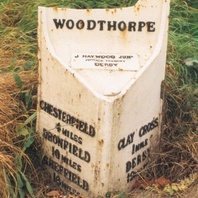
Viking Names
Woodthorpe
Woodthorpe, in the Scarsdale Hundred of Derbyshire, is an Anglo-Scandinavian hybrid name from Old English wudu ‘a wood; or wood, timber’ and Old Norse þorp ‘a secondary settlement, a dependent outlying farmstead or hamlet’.
Read More
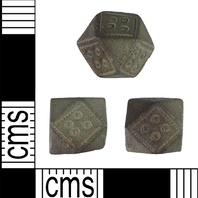
Viking Objects
Polyhedral Weight (LIN-752A9C)
This copper-alloy weight is of a type common within the Scandinavian diaspora. This example has fourteen sides and four dots on each of the rectangular sides. These weights were adopted by the Vikings from Middle Eastern examples and appear to have become a de facto weight standard for traders. Weights are an important form of evidence for Viking Age commerce and the use of standards across the different economic systems within which Vikings were integrated. Many of the weights discovered, particularly ones in Ireland and those of Arabic type, suggest that a standardized system of weights existed in some areas. These standard weights, alongside standard values of silver, are what allowed the bullion economy of Viking occupied areas to function. A bullion economy was a barter economy that relied on the exchange of set amounts of precious metal in various forms, such as arm-rings or coins, for tradable goods, such as food or textiles. Each merchant would have brought their own set of weights and scales to a transaction to make sure that the trade was conducted fairly.
Read More
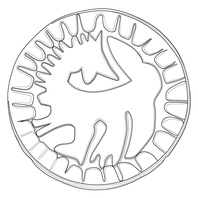
Viking Designs
Drawing of a Brooch with Backwards-Facing Beast
Drawing of a disc brooch found at South Ferriby, Lincolnshire with a backwards-facing beast motif. For more information on Scandinavian jewellery in England check out our blog: Brooches, Pendants and Pins: Scandinavian Dress Accessories in England.
Read More
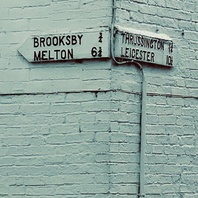
Viking Names
Brooksby
Brooksby, in the East Goscote Hundred of Leicestershire, is a difficult name. The first element is likely the Old Norse male personal name Brok which was originally a byname derived from Old Norse brók ‘breeches’. Alternatively it has been suggested that the first element is Old English broc ‘a brook, a stream (used of a stream with a muddy bed and a visible sediment load)’. This brook may refer to the River Wreake or more likely a small stream which rises near Brooksby. The first element could also be the Old Danish cognate brok ‘bog, marsh’ which is found in place-names in Denmark. However, these elements do not otherwise show a genitival structure whereas the personal name does. The second element of the name is Old Norse by ‘a farmstead, a village’.
Read More
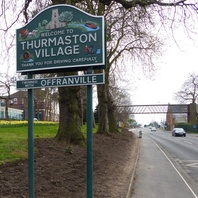
Viking Names
Thurmaston
Thurmaston, in the East Goscote Hundred of Leicestershire, is an Anglo-Scandinavian hybrid from the common Old Norse male personal name Þormóðr and Old English tun ‘an enclosure; a farmstead; a village; an estate’. A few thirteenth and fourteenth century spellings of Thurmaston seem influenced by the Old Norse male personal name Þormundr. A large pagan, Anglian cemetery has been discovered here, no doubt that of an important early settlement site preceding Scandinavian appropriation.
Read More
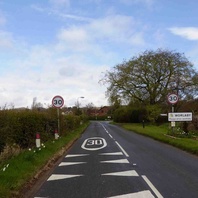
Viking Names
Worlaby
Worlaby, in the Yarborough Wapentake of Lincolnshire, is a hybrid name coming from the Old English male personal name Wulfric and Old Norse by ‘farm, settlement’, identical with Worlaby in the Hill Wapentake of Leicestershire, now a lost village. The two Domesday book spellings in Ulu- are presumably Scandinavianised forms.
Read More
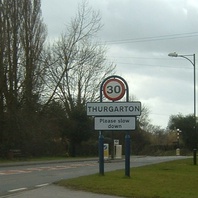
Viking Names
Thurgarton
Thurgarton, in the Thurgarton Wapentake of Nottinghamshire, comes from the Old Norse male personal name Þorgeirr (though in an anglicised form Þurgar) and the Old English element tun ‘farm, settlement’, and is thus a hybrid name.
Read More
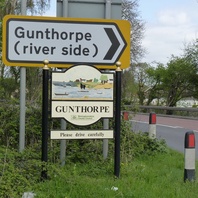
Viking Names
Gunthorpe
Gunthorpe, in the Thurgarton Wapentake of Nottinghamshire, comes from the Old Norse female personal name Gunnhildr and the Old Norse element þorp ‘outlying farm/settlement’.
Read More

Viking Names
Sturston
Sturston, in the Appletree Hundred of Derbyshire, comes from the Old Norse male personal name Stýrr and the Old English element tun ‘farm, settlement’. It is thus a hybrid name. The Domesday Book mentions Sturston Hall as one of two manors held by Ulfkil ‘Ulfkell’ and Wudia ‘Wodi’, each manor being of half a carucate (a Danish land measure) each. Parts of the parish were transferred to Bradley and Offcote and Underwood and the rest to Ashbourne in 1934.
Read More
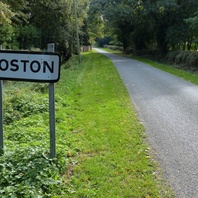
Viking Names
Foston
Foston, in the Appletree Hundred in Derbyshire, has a difficult naming history. The form of the name in Domesday Book, Farvlvestvn, seems to be from the Old Germanic male personal name Farulf with the second element Old English tun ‘farm, settlement’. It is believed that Foston, from the Old Scandinavian male personal name corresponding to the Old Norse male personal name Fótr, was originally a separate settlement site which in the course of time became more important than Farvlvestvn and displaced this name. Alternatively, the name Farulfr was common in Swedish and the first element in the Domesday form of this place-name may well be this Scandinavian name. Foston is a joint parish with Scropton.
Read More
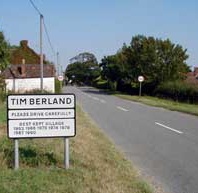
Viking Names
Timberland
Timberland, in the Langoe Wapentake of Lincolnshire, is likely an Anglo-Scandinavian hybrid coming from Old English timber ‘timber, trees; a wooden building’ and Old Norse lundr ‘a small wood’, thus giving the place-name the meaning ‘the grove where timber is obtained’. Alternatively, the first element may be Old Norse timbr ‘timber, trees, wood’.
